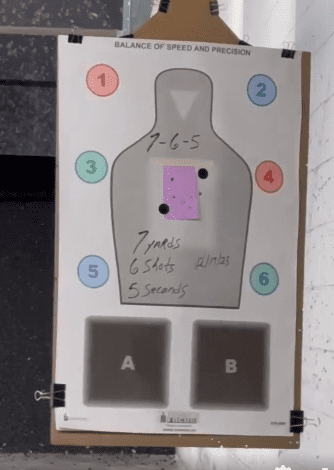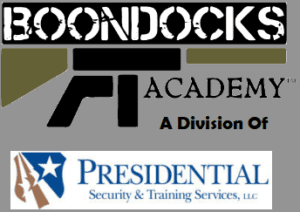The Unpredictability of Ballistic Injuries
The 9mm is a better than the 40 S&W and 45 ACP! That statement has probably sold more magazines and started more barfights than any other self-defense statement. A recent article entitled “The Unpredictability of Ballistic Injuries” published by Boondocks FTA™ instructor Andy Anderson in Science Direct, reminded me of the some of the stories I have heard from other physicians and instructors on what they have seen in the ER and in the field. Some of the most shocking stories include people that have walked into the ER fully conscious and talking after being shot in the head with at 45 ACP. In one incident, the bullet failed to enter the skull and traveled over the top of the head, just under skin, stopping at the back of the neck. In another, the bullet entered the orbital socket and traveled through the brain and stopped just under the skin at the back of the skull.
So What caliber is best?
In many of his classes Dave Spaulding, instructor and former Law Enforcement Trainer of the year, talks about his master’s thesis called “The Incapacitation Effectiveness of Police Handgun Ammunition”. In it he studied police reports and autopsies from officer involved shootings all over the country and discusses some of his findings in this video called “Stopping Power“. Though it wasn’t mentioned in the video, Dave explained in his classes the results of his thesis was there was no way to predict how a bullet would perform or which caliber was more effective. This was due in part to the “unpredictability” mentioned in Andy’s article. Another instructor who has extensively researched and written on this topic is Greg Ellifritz from Active Response Training. His article in American Handgunner magazine is great read, but what I find even more interesting is his more detailed article called “An Alternate Look at Handgun Stopping Power” posted on his website. In it, he goes into more details on why some of the smaller calibers may appear to have better first shot stops. Both Dave and Greg surmise that it doesn’t really matter what caliber you carry, what matters more is shot placement and the ability to put multiple rounds on target quickly. But what does “quickly” mean?
Self-Defense Proficiency Standards
To understand what quickly means, we need to understand what a self-defense situations look like. The preeminent expert on this is Tom Givens. He has the largest database of former students that have been in gunfights and he details them in his book “Concealed Carry Class“. I highly encourage you to get this book and read it,! But to summarize the data, the majority of the self-defense incidents from his students required 3-5 shots, occurred at a distance of 3-5 yards and was over in 3-5 seconds.
How Do You Guarantee a Win?
Unfortunately, there are only two guarantees in a gunfight. First, under this level of stress your body will not allow you to shoot slowly and you are going to pull the trigger as fast as you can. Second, your bullets will hit something! It may be the bad guy, but it could also be the building, car or innocent bystander in the background. For the average gun owner that would equate to about 3-4 shots per second and hits “somewhere” on the bad guy at a distance out to about 3 yards. For a highly trained shooter they would likely be able to put 5-6 shots per second on anatomically important part of the bad guy out to about 7 yards. However, in addition to the time it takes to fire those shots, you also have to add in the time it takes to recognize the need to shoot and get the gun into the fight. This could be an additional 1.5 seconds even if the gun is already in your hand! If you are surprised by the attacker while your gun is not in hand this could significantly increase the time just to get the gun into the fight. One of the best ways to asses your skill level is to utilize time and accuracy standards dictated by a shooting drill.
The 357 Drill*
In May of 2020, I developed the 357 drill for Tom Given’s Master Firearms Instructor Class. You can read about the drill and even download the target by clicking HERE. It only requires 15 rounds and has 4 different skill levels (Basic, Intermediate, Advance and Expert) so you can see where you are on the scale. Another good drill is the 5×5 drill detailed by Greg Ellifritz on his Active Response Training site. Recently, Andy Anderson (the Boondocks instructor and ER doctor that penned the article at the top of this post) has created the 7-6-5 drill. He uses a 3″x 5″ index card as a target and from 7 yards puts 6 shots on target in 5 seconds while drawing from concealment. While you are never guaranteed a win in a gunfight, with frequent and deliberate practice you can greatly increase your odds. In the new year, I encourage you to pick one of these drills and get out there and practice.


